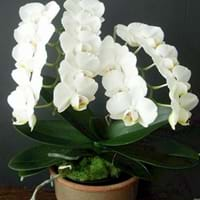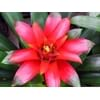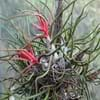Life Span
Perennial
Perennial
Origin
Brazil
Southeastern Asia, Australia
Types
Bigleaf hydrangea, Hortensia, Smooth hydrangea, Oakleaf hydrangea, Annabelle
lovely moth orchid is a type of orchid
Number of Varieties
Not Available
Habitat
Forest edges, Hillside, Woods
close to waterfalls, Humid climates, Rainforest, Thickets
USDA Hardiness Zone
14-15
12-15
Habit
Prostrate/Trailing
Clump-Forming
Minimum Height
Not Available
Minimum Width
Not Available
Flower Color
Orange
White
Flower Color Modifier
Not Available
Not Available
Fruit Color
Not Available
Not Available
Leaf Color in Spring
Dark Green
Green
Leaf Color in Summer
Dark Green
Green, Bronze
Leaf Color in Fall
Dark Green
Green, Bronze
Leaf Color in Winter
Dark Green
Green, Bronze
Leaf Shape
Oblovate
Oblong elliptic
Plant Season
Spring, Summer, Fall, Winter
Spring, Fall, Winter
Sunlight
Partial Sun, Partial shade, Full Shade
Partial Sun, Partial shade
Type of Soil
Loam, Sand
Not Available
The pH of Soil
Neutral
Not Available
Soil Drainage
Average
Well drained
Bloom Time
Indeterminate
Early Spring, Spring, Fall, Late Fall, Early Winter, Winter, Late Winter
Tolerances
Not Available
Not Available
Where to Plant?
Container, Ground
Container, Ground, Pot
How to Plant?
Seedlings, Stem Planting
Divison, Seedlings, Transplanting
Plant Maintenance
Medium
High
Watering Requirements
Not Available
Do Not over Water, Water when soil is dry
In Summer
Not Available
Drought Tolerant
In Spring
Moderate
Less Watering
In Winter
Average Water
Average Water
Soil pH
Neutral
Not Available
Soil Type
Loam, Sand
Not Available
Soil Drainage Capacity
Average
Well drained
Sun Exposure
Partial Sun, Partial shade, Full Shade
Partial Sun, Partial shade
Pruning
Remove damaged leaves, Remove dead branches, Remove dead leaves
Remove damaged leaves
Fertilizers
All-Purpose Liquid Fertilizer
All-Purpose Liquid Fertilizer
Pests and Diseases
Red blotch
Bacterial Blight, Black Spot, Botrytis Cinerea, Brown Rot
Plant Tolerance
Not Available
Not Available
Flower Petal Number
Single
Single
Foliage Texture
Coarse
Coarse
Foliage Sheen
Glossy
Glossy
Attracts
Hummingbirds
Not Available
Allergy
Chest tightness, Diarrhea, Dizziness, Nausea, Vomiting
Not Available
Aesthetic Uses
Not Available
Beautification, Bouquets, Showy Purposes
Beauty Benefits
Not Available
Not Available
Edible Uses
Not Available
No
Environmental Uses
Air purification
Indoor Air Purification
Medicinal Uses
Fever, Kidney problems, Urinary tract problems
Not Applicable
Part of Plant Used
Flowers, Root
Flowers
Other Uses
Not Available
Used as Ornamental plant
Used As Indoor Plant
Not Available
Yes
Used As Outdoor Plant
Yes
Yes
Garden Design
Container, Hanging Basket, Tropical
Container, Cutflower, Hanging Basket, Houseplant, Tropical
Botanical Name
NEMATANTHUS gregarius
PHALAENOPSIS amabilis
Common Name
Goldfish Plant
Lovely Moth Orchid, Lovely Phalaenopsis
In Hindi
Hydrangea
Lovely Moth Orchid
In German
Hortensie
Schöne Phalaenopsis
In French
Hortensia
Belle Phalaenopsis
In Spanish
Hortensia
Preciosa orquídea de polilla
In Greek
υδραγεία
Υπέροχο Moth Orchid
In Portuguese
Hortênsia
Encantador Moth Orchid
In Polish
Hortensja
Piękny Moth Orchid
In Latin
Hibiscus
Quæcumque amabilia Moth Orchid
Phylum
Not Available
Tracheophyta
Class
Not Available
Liliopsida
Order
Not Available
Asparagales
Family
Gesnariaceae
Orchidaceae
Genus
Not Available
Phalaenopsis
Clade
Not Available
Angiosperms, Monocots
Tribe
Not Available
Not Available
Subfamily
Not Available
Epidendroideae
Number of Species
Not Available
Not Available
Properties of Goldfish Plant and Lovely Moth Orchid
Wondering what are the properties of Goldfish Plant and Lovely Moth Orchid? We provide you with everything About Goldfish Plant and Lovely Moth Orchid. Goldfish Plant doesn't have thorns and Lovely Moth Orchid doesn't have thorns. Also Goldfish Plant does not have fragrant flowers. Goldfish Plant has allergic reactions like Chest tightness, Diarrhea, Dizziness, Nausea and Vomiting and Lovely Moth Orchid has allergic reactions like Chest tightness, Diarrhea, Dizziness, Nausea and Vomiting. Compare all the properties and characteristics of these two plants. Find out which of these plant can be used as indoor plant. If you are interested to decorate your house and garden, find out aesthetic uses, compare them and select the plant which will beautify your surrounding. Along with beautification, try comparing medicinal and edible uses of Goldfish Plant and Lovely Moth Orchid and you can choose the plant having best and most benefits.
Season and Care of Goldfish Plant and Lovely Moth Orchid
Season and care of Goldfish Plant and Lovely Moth Orchid is important to know. While considering everything about Goldfish Plant and Lovely Moth Orchid Care, growing season is an essential factor. Goldfish Plant season is Spring, Summer, Fall and Winter and Lovely Moth Orchid season is Spring, Summer, Fall and Winter. The type of soil for Goldfish Plant is Loam, Sand and for Lovely Moth Orchid is Not Available while the PH of soil for Goldfish Plant is Neutral and for Lovely Moth Orchid is Not Available.
Goldfish Plant and Lovely Moth Orchid Physical Information
Goldfish Plant and Lovely Moth Orchid physical information is very important for comparison. Goldfish Plant height is Not Available and width Not Available whereas Lovely Moth Orchid height is 15.20 cm and width 22.90 cm. The color specification of Goldfish Plant and Lovely Moth Orchid are as follows:
Goldfish Plant flower color: Orange
Goldfish Plant leaf color: Dark Green
Lovely Moth Orchid flower color: White
- Lovely Moth Orchid leaf color: Green
Care of Goldfish Plant and Lovely Moth Orchid
Care of Goldfish Plant and Lovely Moth Orchid include pruning, fertilizers, watering etc. Goldfish Plant pruning is done Remove damaged leaves, Remove dead branches and Remove dead leaves and Lovely Moth Orchid pruning is done Remove damaged leaves. In summer Goldfish Plant needs Not Available and in winter, it needs Average Water. Whereas, in summer Lovely Moth Orchid needs Drought Tolerant and in winter, it needs Average Water.




